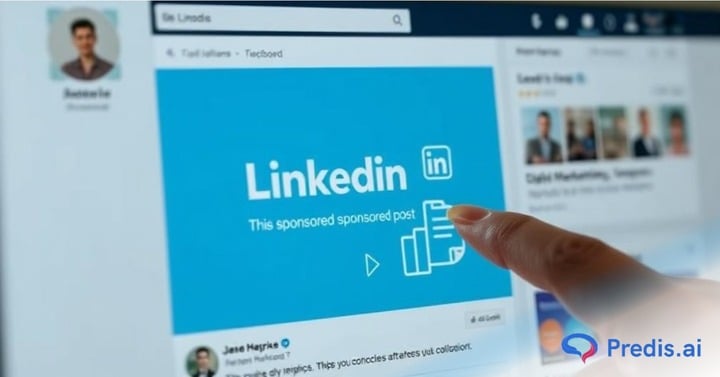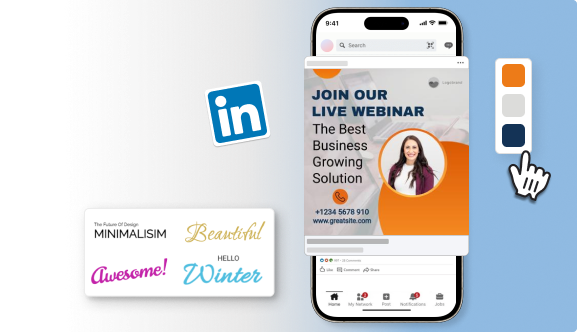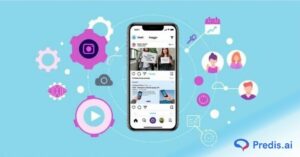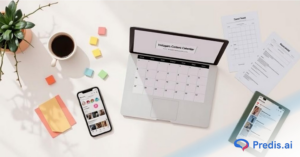Writing CTAs for ads is an art that is not to be messed with. Because an unclear or bad CTA can fail to catch the attention of the audience, and as a result, cost your business a lot of leads and conversions. But if you are overwhelmed with your choice of CTAs and don’t know which one to pick, here is a guide to help you through it. By the end of this, you will be able to create the best Call To Action for your LinkedIn Sponsored posts.
So, let us begin!
What is LinkedIn Sponsored Content?
LinkedIn sponsored content is native ads that are placed between organic posts in the user’s feed. This kind of placement makes the ads avoid banner blindness and have a natural feel to them. To make them distinct from the organic content, these kinds of posts are usually branded as “Promoted”.
Sponsored content is a type of paid ad that camouflages itself within the organic feed. There are other types of paid ads as well, such as Inmail, dynamic, and text ads.
Sponsored content can be in one of the following formats:
- Single image
- Video
- Carousel
- Document and so on.
Sell More via LinkedIn 💰
TRY FOR FREEHow To Write A Good CTA for Your LinkedIn Sponsored Content?
Writing a great CTA can make all the difference in your ad’s success. Which is why writing CTAs is given such a huge value in the ad-making process. However, if you are new to it, here is a step-by-step approach you can take to create a Call To Action for LinkedIn that has a positive impact on your ads:
1. What is The Final Action?
What is the action you want your users to take at the end of the sponsored post? Do you want them to take a look at your profile?
Maybe want them to click on a link?
Book a demo with you?
Finalizing your output action is most important. Because if you are not clear on what your users need to do, then how will you convince your viewers to do it?
So, take some time to figure out what action you want them to take and articulate it in a rough sentence as a starting point.
2. Outline the Offer in The Text
Now that you have a clear idea of what you want to happen, it is time to convey this effectively to the person seeing the ad.
With a single line CTA, you cannot get this done, which is why your post and images should pave the way for this by explaining your offer and making it desirable. This way, your CTA can have the final say and take the centre stage, beckoning users to click on it.
This is why deciding on your Call To Action for LinkedIn before you start creating your post can be quite beneficial.
3. Use Visual Elements To Your Benefit
High-quality visuals and imagery have the potential to attract attention like no other. And that is what we want our CTAs to do, too. We want it to take the centre of attention.
This is why you have to use images and videos carefully. Because if you do not use it adequately, they can attract attention away from your CTA. Instead, place these images near CTAs to keep them in the limelight.
4. The Offer Should Be Apparent
CTAs need to offer a clear value. Because if you don’t show how clicking on it can be valuable to the user, then they will not see the need to click on it.
Incentivize your users to click on CTAs, this can be anything from offering a 20% discount or giving them an early-bird coupon. Make sure to convey this incentive as soon as possible in a clear manner.
5. Use Customer Resonant Language
The final step of the CTA creation process is to check whether the ad and the CTA are written in a language that resonates with the audience.
If your ad message is not relatable to your audience, they might not feel that the ad is directed to them. This can be further translated into no interaction from their part, which can impact your conversion rates. Before testing your CTA with a real audience you can test it on LinkedIn’s Predictive Audience.
5 Most Popular CTA Examples And When To Use Them
Here are some of the popular Call To Action for LinkedIn that are used in sponsored ads:
1. Learn More or Read More
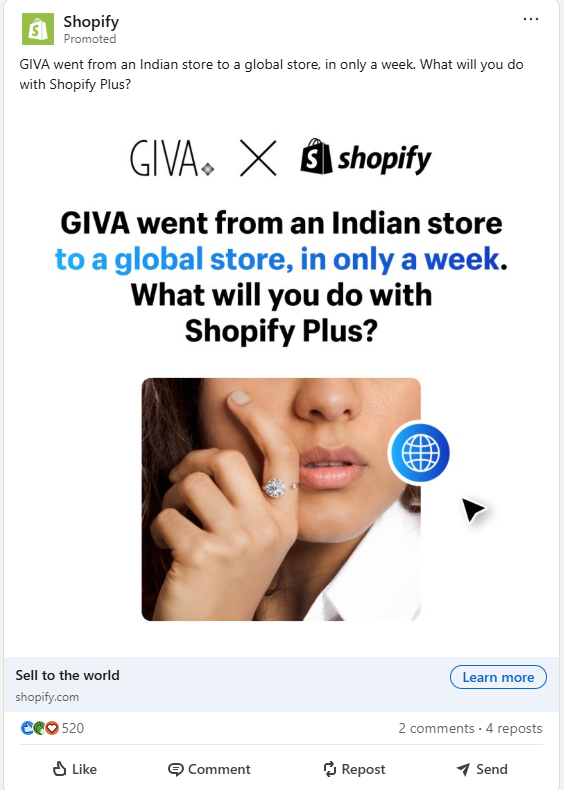
Sometimes, the initial marketing copy will not be sufficient to convey all the information. And as a result, you need to divert them to a web page where they can gather more information and maybe sign up for a newsletter. Or in some short sales cycle products, you can even get them to complete a purchase.
In such cases, the “Learn More” or “Read More” CTA can come in handy.
2. Get Started or Get a Quote
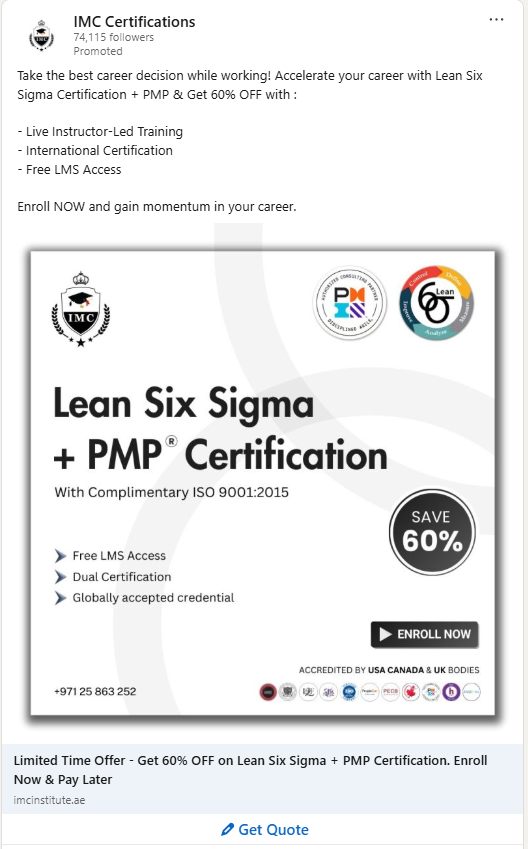
If you are a product owner or a service provider who has a tool that you want people to check out, then these CTAs can work best for your ad.
Although Get Quote could seem like a bottom-of-the-funnel type of CTA, these are good options for you to check out.
3. Sign Up or Subscribe, or Register
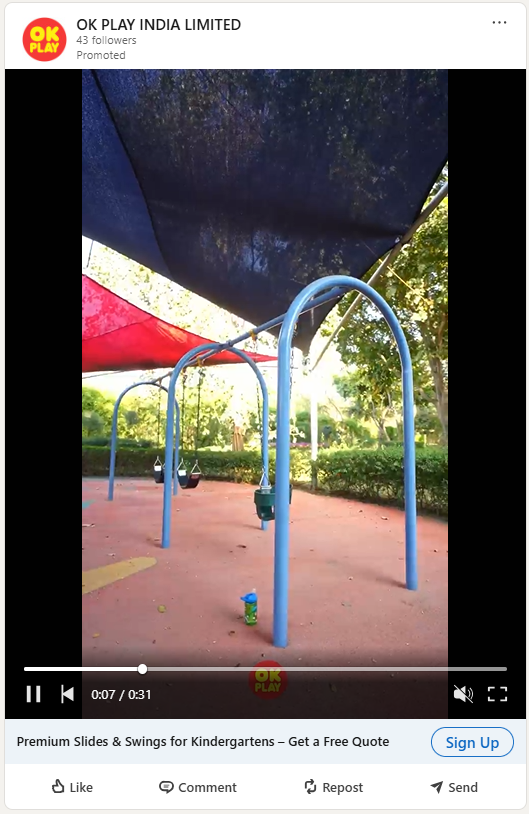
If your end goal is to get people to be a part of your online or offline communities, newsletters, or followers, then these CTAs can be of service to you. These are some of the frequently used ones, so you can rest assured that they work.
4. Request Demo or Try For Free

Both of these Call To Action for LinkedIn are commonly used when you want customers to sign up for your product or service. Usually, these transactions request an email ID or credit card information in exchange.
5. Download
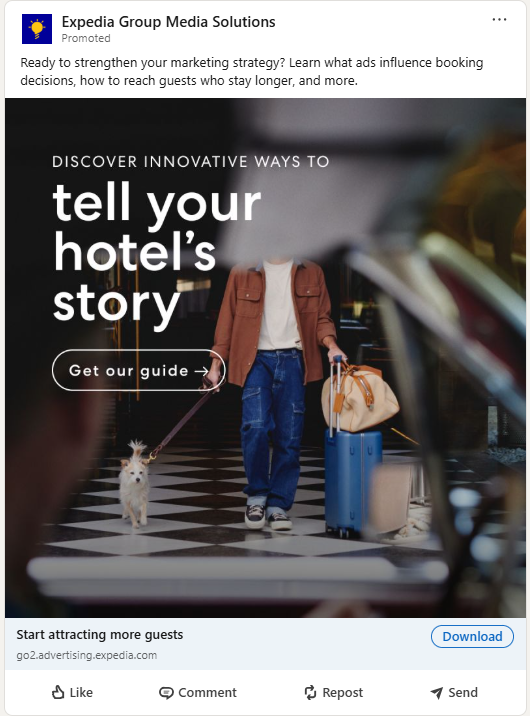
As the name suggests, this CTA button is used when something can be downloaded at the end of the ad. This can be anything from a guide to a checklist. So, if you have a useful document for your audience, then this CTA is what you need to use.
4 Tips To Keep In Mind When Writing Effective CTAs
The above-mentioned Call To Action for LinkedIn is a generic one that people have used time and again. But some ads have used hyper-personalized CTAs and excelled at them. If you, too, want to take this approach, then keep these 4 tips in mind so you can create ones that convert:
1. Have Action-Oriented Language in it
The whole purpose of an ad is to make CTAs that do not confuse the user and depict a picture of what their next step should be. So, whatever CTA you write, make sure to have action-oriented language in it that conveys the corresponding steps clearly.
If you want to take it easy and make the process simple, then you can always get the help of AI CTA generators.
2. Use Time-Tested Formulas
Certain CTA formulas have consistently reaped results by conveying the benefits properly. One such example is “Sign up and Get X”.
By letting users know the incentives they achieve by interacting with the CTA from the get-go, you have a higher chance of ensuring a conversion.
3. Keep It Concise
The first cardinal rule of writing CTAs is to always keep them short and precise. With a power-packed and short CTA, you can get better click-through rates and conversions. But be mindful, and do not make your CTA devoid of meaning; then it will lose its whole purpose.
4. Take CTA design seriously
With a few design tweaks, you can easily make your ad stand out and grasp attention. So, when designing your ads, it is necessary to give some consideration to CTA button design. Some tips you can incorporate are:
- Choose colors that are in contrast with your ad background. This way, your CTA does not get lost in the ad.
- You can also experiment with button designs like rectangle, oval, rounded edges, and so on
- Try to keep the CTAs in places where people normally anticipate them, like at the end of the image.
6 Metrics To Help You Measure the Success of Your CTAs
When it comes to any aspect of ads, it is essential to keep testing. By A/B testing your ads every now and then, you can discover different combinations that perform better than your usual technique. And this discovery can take your ads to a whole new level.
Likewise, testing and measuring the success of your CTAs are very important as well. But, how do you do that? Here are some metrics that you can track to find out how your CTAs are performing:
- Click-through rates: CTR helps you figure out if your CTAs are enticing enough for the audience to click.
- Engagement: If the ad unit is getting good engagement, such as likes, shares, and comments.
- Conversion rate: The people who click through your ad to reach the landing page make the final conversion, such as signing up for a newsletter or making a purchase.
- Bounce Rate: The number of people who quickly leave a landing page without making a conversion.
- Page views: The number of people who visited your landing page after clicking on the CTA.
- Impressions: How many times the particular ad is being seen.
Final Note On Writing a CTA
When writing a CTA for a LinkedIn post, it is crucial to tie the CTA to the rest of the ad narrative. Because without everything coming together to paint a whole picture, your ad will not be effective in getting click-through rates.
This is where Predis AI has helped make it easy. If you just enter a simple prompt regarding your ad, Predis AI can generate a whole creative with ad copy, CTA, and hashtags for you. With our advanced AI-generative capabilities, we make ad and social media content making as easy as possible.
So, sign up today and get your free account to start accelerating your content game!
FAQ:
CTA, in general, is a Call-To-Action button that usually tells the user what the next step is that they need to take. This can be anything from clicking a link, following a social profile, or signing up for a newsletter.
When writing a CTA, keep in mind the objective of your ad. Then write a CTA that goes well with the rest of the ad context. You can always experiment with different CTAs to figure out ones that work best for your audience.
Yes, you can A/B test your ads on LinkedIn, and it is recommended to do so.


